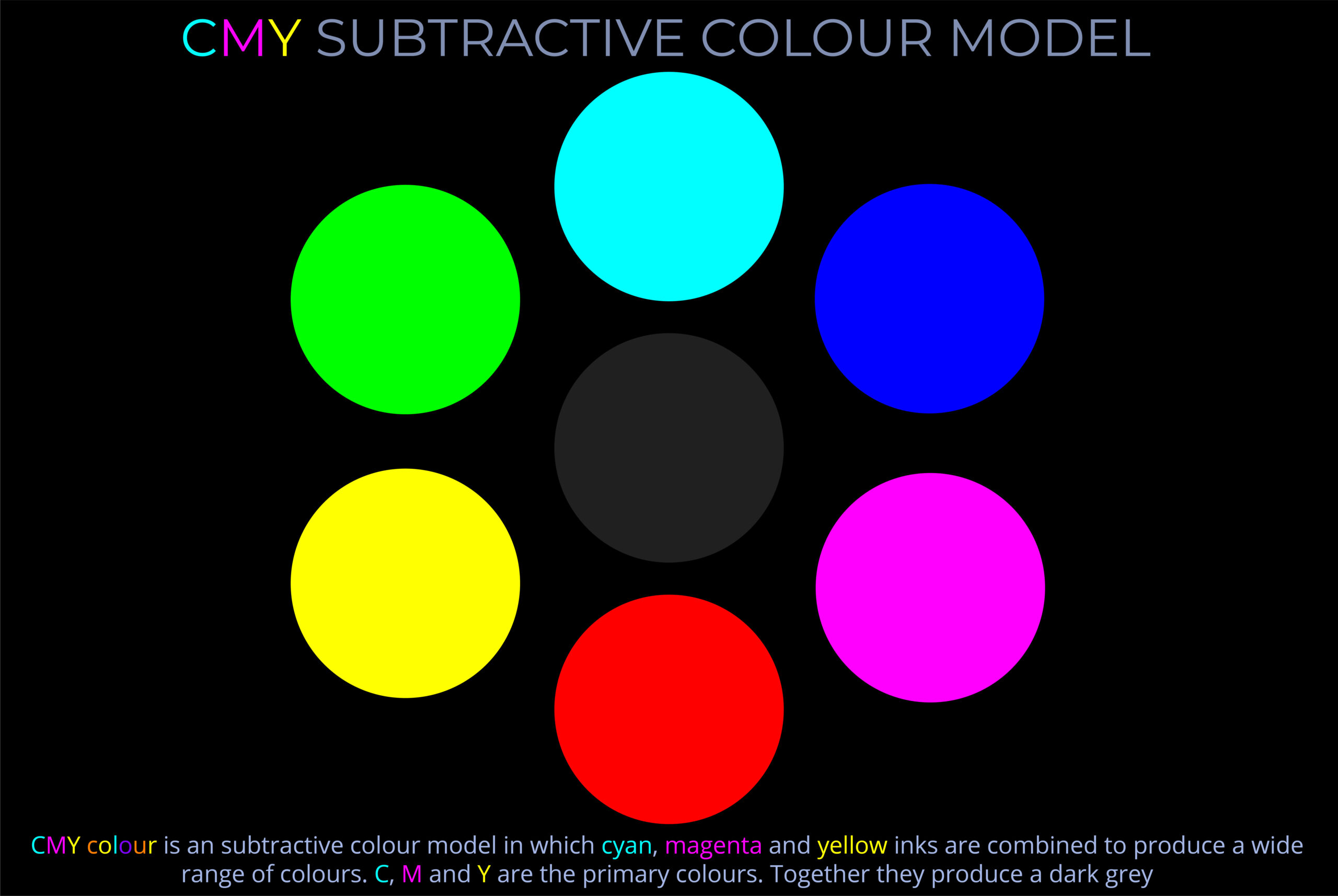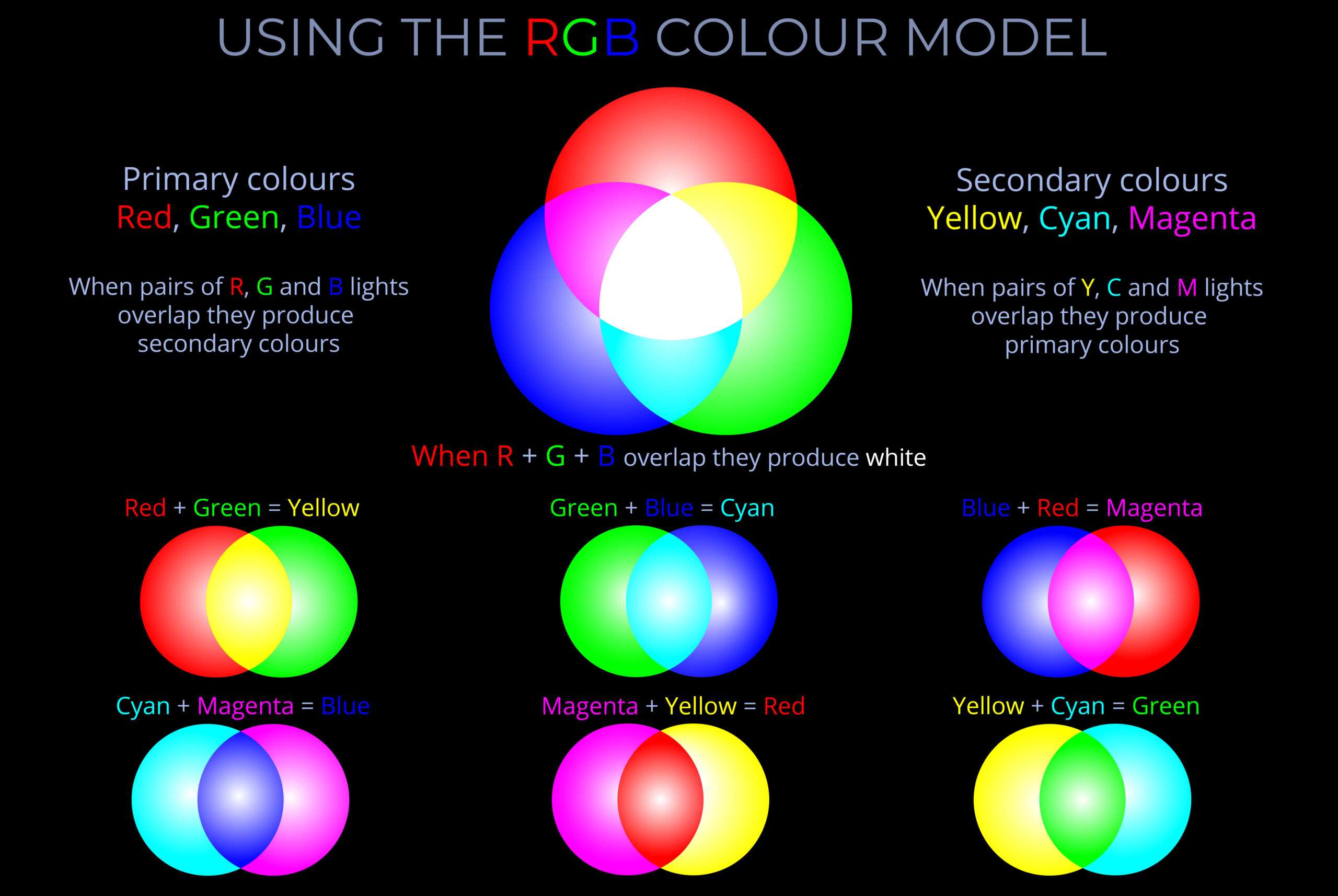Colour theory underpins all colour models and all forms of colour management. Some theories explain how human beings perceive colour, others provide practical methods for managing colour in both analogue and digital colour spaces.
Colour theories discussed here at lightcolourvision.org include:
- CMY colour model
- Greyscale colour model
- HSB colour model
- Lab colour model
- RGB colour model
- Spectral colour model
- Trichromatic colour model
Other important references include:
- Munsell colour system – a standardized and perceptually uniform colour model that defines colours based on their hue, value (lightness), and chroma (colour purity).
- Pantone Colour Matching System (PMS) – a standardised system for the colour printing industry.
- RAL colour space system – used mainly for powder coating, varnish, and plastic colouring.
Colour theories underpin:
- Colour management
- Colour model/s
- Colour space/s
- Colour wheel/s, colour picker/s, colour swatches
- Colour profile/s for digital workspaces, monitors, printers etc.
Human perception of colour
The aspect of colour theory concerned with human perception aims to answer questions about:
- How our eyes register colour when exposed to light.
- The way our eyes and brains work together to produce the complex perceptions that make up the visible world.
- The part of the electromagnetic spectrum that is related to colour and how our eyes respond to different wavelengths of light.
- The fact that red, green and blue lights combined in different proportions can produce the impression of all the colours of the visible spectrum.
- The way colours appear in different situations such as in low or bright light and under artificial lighting.
- Human responses to different combinations of colour such as analogous, complementary and contrasting colours.
- The differences between the scientific, technical and creative understandings and descriptions of colour.
- Understanding the differences between:
- The way our eyes see colour
- Light and colour in the world around us
- The colour of opaque objects and surfaces
- The colour of transparent media
- Colour on TVs, computers and phone screens
- Colour in printed images
How-to methods for managing colour
The aspect of colour theory concerned with how-to methods for working with colour in different situations aims to answer questions about:
- The differences between mixing coloured lights, pigment or inks.
- Mixing and managing ranges (gamuts) of colours in logical, predictable and repeatable ways.
- Identifying and mixing particular colours in predictable and repeatable ways.
- Specifying colours using names, codes, notation, equations etc.
- The difference between additive and subtractive colour mixing.
- Systems and rules for mixing different media and applying them to fabrics, interiors and vehicles.
- Creating colour palettes, gamuts and colour guides.
- Managing the consistent reproduction of digital colour from start to finish.
Contributors to contemporary theories of colour
Some important contributors to contemporary theories of colour include:
- Leone Battista Alberti (c. 1435)
- Leonardo da Vinci (c. 1490)
- Isaac Newton: Opticks (1704)
- Johann Wolfgang von Goethe: Theory of Colours (1810)
- Michel Eugène Chevreul: The Law of Simultaneous Color Contrast (1839)
- Charles Hayter: A New Practical Treatise on the Three Primitive Colours Assumed as a Perfect System of Rudimentary Information (1826)
- Ogden Rood: Modern Chromatics (1879)
- Albert Henry Munsell: Book of Colour (1915)
- Wilhelm Ostwald: Colour Atlas (1919)
- The Bauhaus: including Johannes Itten, Wassily Kandinsky, Paul Klee and Joseph Albers (1919 – 1933)
References
- https://en.wikipedia.org/wiki/Color_theory
- Colour theory underpins all colour models and all forms of colour management. Some theories explain how human beings perceive colour, others provide practical methods for managing colour in both analogue and digital colour spaces.
- Colour theories discussed here at lightcolourvision.org include:
- CMY colour model
- Greyscale colour model
- HSB colour model
- Lab colour model
- RGB colour model
- Spectral colour model
- Trichromatic colour model


